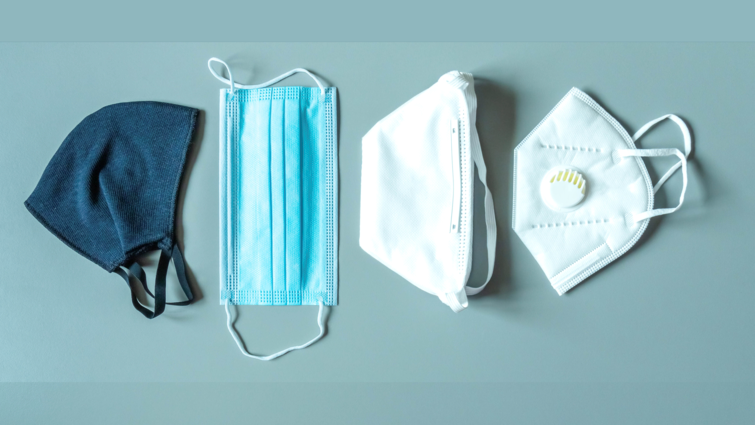The Best Mask?
With the onset of COVID-19, authorities have recommended or mandated that masks be worn to slow the spread of the virus. But which one should you be wearing to best protect yourself and those around you?
According to Joseph Gardner Allen, the director of the Healthy Buildings program at Harvard, “You want to have a minimum two-ply mask, preferably a three-ply mask,” and avoid bandanas and gaiter masks. In addition, the mask should, “go over the bridge of the nose, below the chin and be flush on the face, resting along the skin.” Your breath should not be escaping out from the sides. Instead, it should be going through the filter media.
Cloth masks with high thread counts are also a great choice for masks. A tight weave of 100% cotton is recommended, and one can check the weave by using a light test: if the outline of the individual fibers are visible when the mask is held up to the light, the mask will most likely not be effective. Cloth masks are also highly customizable, which makes them a popular choice for those who like matching their outfits with their masks.
What’s more effective than one mask? Two masks! Monica Gandhi, an infectious disease specialist at the University of California suggests wearing a cloth mask over a surgical mask when it comes to crowded places or if you’re at high risk of COVID-19. She explains that the cloth mask adds a layer of filtration while the surgical mask, “literally repels the virus electrostatically.” However, double masking is not necessary for kids or if you’re just taking a walk, as there is less risk.
It is important to note that the CDC (Centers for Disease Control and Prevention) has recently also recommended that people use a double mask as much as possible, ” Wearing a second mask on top of a first mask (to create a “double mask”) can: Improve fit by pressing the inner mask closer to the face, thereby reducing the amount of air that leaks around the edges of the masks and improve filtration by adding more layers of material to reduce the number of respiratory droplets containing the virus that come through the masks.” The CDC continues by noting that “One way to do this is to wear a medical procedure mask underneath a cloth mask. A recent study conducted in a laboratory found that this “double mask” combination provided much better protection to the wearer and to others as compared with a cloth mask by itself or a medical procedure mask by itself.”
Lastly, as a reminder, CDC urges people to avoid buying N95 masks for personal use. These are considered critical supplies for healthcare workers as they filter out 95% of all particles, so N95 masks should be reserved for medical first responders.
In summary, masks are important for stopping the spread of COVID-19, yet just as crucial is the type of mask you’re wearing. Making sure that you’re wearing an effective mask plays a large part in keeping you and others around you safe in addition to washing your hands and staying indoors.











